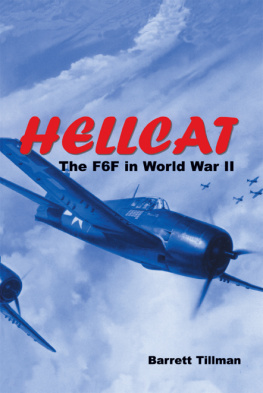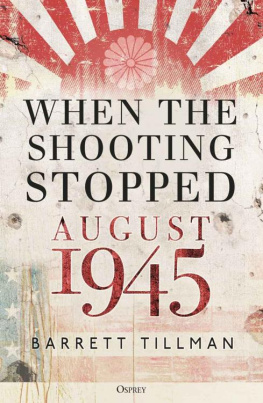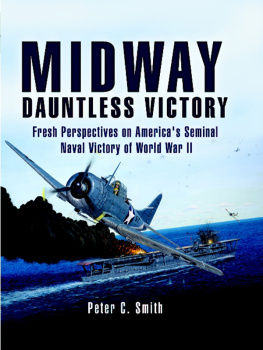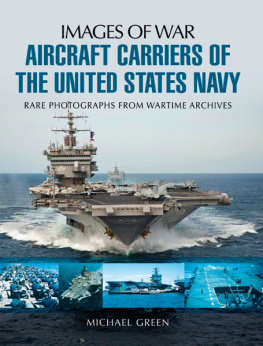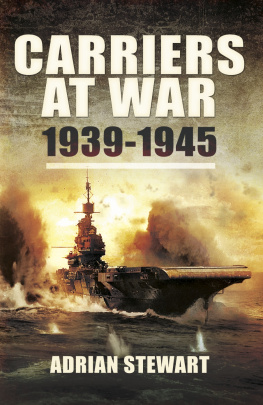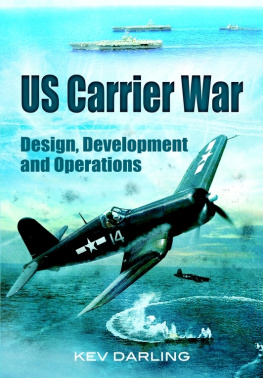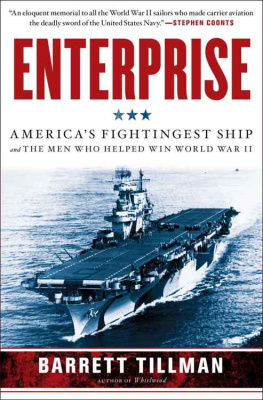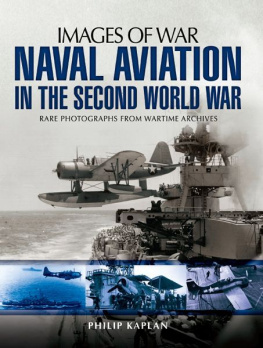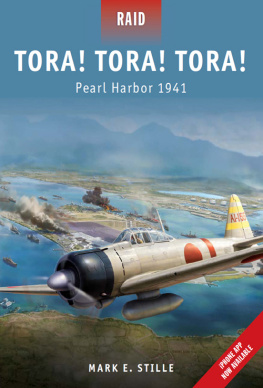the
dauntless
dive bomber
of world war two


The latest edition of this work has been brought to publication with the generous assistance of Marguerite and Gerry Lenfest.
Naval Institute Press
291 Wood Road
Annapolis, MD 21402
1976 by Barrett Tillman
All rights reserved. No part of this book may be reproduced or utilized in any form or by any means, electronic or mechanical, including photocopying and recording, or by any information storage and retrieval system, without permission in writing from the publisher.
First Naval Institute Press paperback edition published 2006
ISBN 978-1-61251-543-4 (eBook)
The Library of Congress has cataloged the hardcover edition as follows:
Tillman, Barrett.
The Dauntless dive bomber of World War Two / by Barrett Tillman.
p. cm.
Originally published: Annapolis, Md. : Naval Institute Press, 1976.
Includes bibliographical references and index.
1. World War, 1939-1945Pacific Ocean. 2. Dauntless (Dive bomber) 3. World War, 1939-1945Aerial Operations, American. 4. World War, 1939-1945Naval operations, American. I Title.
DS559.5.F35 2010
959.70437dc22
2005027285

 Print editions meet the requirements of ANSI/NISO z39.48-1992 (Permanence of Paper).
Print editions meet the requirements of ANSI/NISO z39.48-1992 (Permanence of Paper).
9 8 7 6 5 4 3 2
To the Memory of William A. Cantrel Colonel, USMCR
Legends for two-page photographs follow:
Frontispiece: Nearly identical to the SBD-3, the SBD-4 differed mainly in its improved electrical system. This Dauntless sports the 1943 tri-color scheme which later that year became standard in the Pacific. (U.S. Marine Corps)
Pages : The Saratoga air group preparing to launch on a prewar mission. The SBD-2s of Bombing Squadron Three are in the foreground. (U.S. Navy)
Pages : At the command, Prepare for launching planes, this carrier flight deck, in early 1942, became as busy as a mid-town street crossing. (U.S. Navy)
Pages : Tokyo-bound, Enterprise trails Hornet enroute to launching Colonel Jimmy Doolittles B-25s against the Japanese in April 1942, three weeks before the Battle of the Coral Sea. (U.S. Navy)
Pages : Loaded with heavy caliber bombs, these SBD-3 dive bombers stand ready for takeoff, early in 1942. Even in heavy weather and with rain making the carrier deck slippery, wartime operations proceeded on schedule. (U.S. Navy)
Pages : The ever-present mud of Henderson Field is evident in this late 1942 photo as SBDs and TBFs start their engines in preparation for a mission from Guadalcanal. (U.S. Marine Corps)
Pages : An SBD-3 returns to Guadalcanal after a late patrol. (U.S. Navy)
Pages : Dauntless Scout bombers, with the aid of auxiliary gasoline tanks, range far ahead of their carriers in late 1942 to act as the eyes of the task force. (U.S. Navy)
Pages : Composite Squadron No. 29 aboard the escort carrier Santee (VC-29) provided antisubmarine patrol for Atlantic convoys in 1943. (U.S. Navy)
Pages : An SBD-5 of Bomber Squadron 16 is launched from Lexington (CV-16) in early 1944. This was the namesake of CV-2, the carrier which was sunk at the Battle of the Coral Sea. (U.S. Navy)
Pages : A VMBS-231 Dauntless roars over an American fleet anchorage somewhere in the Pacific in 1944. (U.S. Navy)
Pages : Spraying mosquitos in Portland, Oregon, about 1963. This aircraft, A-24A, is now in the Naval Aviation Museum at Pensacola, Florida. (B. Tillman)
When Barrett Tillman asked me about the markings on one of my World War II airplanes, I learned that he and his father, a former Marine pilot, had found a surviving SBD and were restoring it to extremely fine condition. Then came the desire to write a book, the first to be devoted exclusively to the Dauntless dive bomber; it records the SBDs contribution to winning the war, particularly in the Pacific.
A notation in my flight log book dated 27 December 1940 says that Lt. Cdr. H. D. Felt is thoroughly familiar with the equipment, controls and operating procedure for the SBD type aircraft he is about to fly. Bombing Squadron Two was being outfitted with a new dive bomber. For a year, SBD-2, number 2105, provided my steady seat as we trained to fight a real war. The SBD was a joy in a search, a find, and in a dive. During this prewar year, all VB squadrons in Lexington, Saratoga, Enterprise, and Yorktown replaced their older dive bombers with Dauntlesses.
The last days of 1941, starting 7 December, were frustrating searches for the Japanese, who were off and running. I waited dockside for Saratogas arrival at Pearl Harbor. SBD-3, number 4592, had the Air Group Commander marking 00 on her side. But we missed Coral Sea and Midway by reason of a torpedo in Saras side and instead took some SBDs to North Island, where we had to correct a pilot-to-seat ratio of one-to-one.
Meantime, the Dauntless proved what we knew could be true. When we limped off to Bremerton one of Saras squadrons (VB-3) was left behind in Pearl Harbor, then transferred to Yorktown and performed creditably at Midway, Max Leslie in command.
Later came Guadalcanal and the Battle of the Eastern Solomons, where number 03213, Radioman Snyder and I were baptized. Queen Bee was the sobriquet given by flight and ready rooms to 03213. In 1943 the Queen, having survived but suffering too many patches, was retired with ceremony; she was eased over the side.
At that time, SBD-4s and -5s were carrying new pilots being trained at dive bombing in the Operational Training Command. And finally, as I was on the way from Moscow to Okinawa, SBD-6, number 54978, eased me off and onto Ford Island.
So for a span of five years, the Dauntless and I were friends. Many who flew, fed and tended SBDs surely have similar feelings, which the author has revitalized in this book.
Harry Don Felt
Admiral, U.S. Navy (Retired)
Former Commander in Chief,
U.S. Pacific Forces
The year 1942 changed forever the traditional concepts of naval warfare, and the rise of the aircraft carrier coincided with the decline of the battleship. Before that critical year was out, there was no longer room for doubt as to the relative effectiveness of capital ships and aircraft. Exclusive of destroyers and submarines, the U.S. Navy sank only one Japanese battleship and one cruiser in 1942 without the aid of carrier-based aircraft.
Next page

